By Admin
PRESS
CAD2D of CADmeister creates 2D machining paths on the basis of 3D model data as well as 2D elements.
The 2D machining paths used for the commands of Profile Machining, Pocket Machining, and Hole Machining can be created through simple operations.
CAM2D capable of seamlessly integrating the features of CAD and CAM systems enables easy operations of path creation for users in the manufacturing field.
Features
2D Offset
The command creates paths for machining planes by circulating a blade in a subject region where the outlines have been offset.
- The command creates a path on the basis of the understanding of other shapes and processed outlines in the region.
- The command enables users to create highly efficient paths for Open Pocket sections, provided that any specifications about walls have been input.
- The command capable of several types of cutting with a blade enables users to use their discretion in the matters such as specifying the starting point for machining
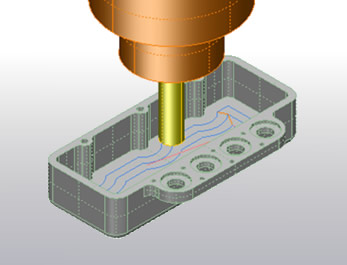
2D Scan
The command creates paths for machining a plane by operating a blade in one direction or making a reciprocating motion of the blade in the subject region.
- The command creates a path on the basis of the understanding of other shapes and processed outlines which exist in the region.
- The command enables users to combine the capabilities of 'Scanning Machining' and 'Profile Machining' in order to leave no areas uncut.
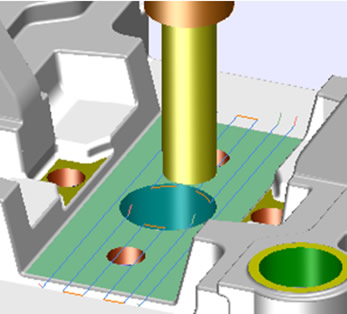
2D Profile Machining
The command creates a path for cutting the specified outlines.
- The command provides two methods for correcting a diameter of tool: correction at the side end; or correction at the center. Thus, it can respond well to the requirements of users in the manufacturing field.
- The command is capable of automatically performing 'gouging' treatment for correcting irregularly machined paths without error.
- The command is capable of cutting in the direction of tool diameter and deep cutting in the direction of tool axis. Thus, the command can be also executed for preliminary rough machining before finishing.
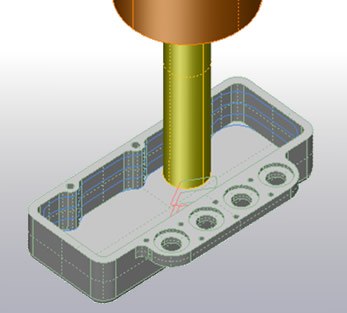
2D Machining of Specific Areas
The command automatically detects any areas that have been left uncut by the previous tool operation, and creates paths for cutting the specific outlines.
- The command enables users to choose a method for correcting a diameter of tool blade. Also, it enables automatic operations of 'gouging' treatment for correcting irregularly machined paths without error.
- The command is capable of controlling the outputs of minute paths and connecting paths that are minutely apart from each other. Thus, it creates exact paths.
- The command is capable of cutting and deep cutting. It enables reliable machining of specified locations through the use of tools of small diameter.
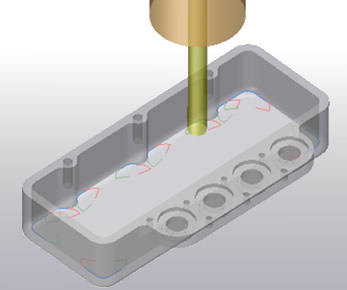
2D Chamfering
The command enables users to create a path for chamfering through simple operations, provided that the chamfering data have been assigned to outline curves/lines.
- The command enables users to choose a method for tool diameter correction. Also, it enables automatic operations of 'gouging' treatment for correcting irregularly machined paths without error.
- The command capable of three types of cutting enables a chamfering without compromising the stability of tool stress.
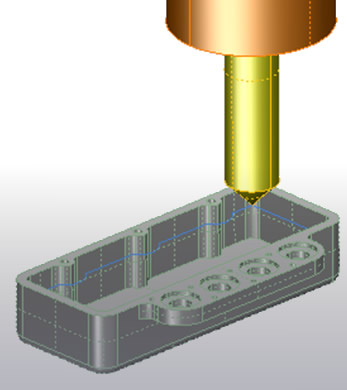
Fixed Cycle Machining
Paths for hole machining can be created through the use of the function of Fixed Cycle which is embedded in a machining tool.
- The registration function enables users to add and edit User Cycles (Cycle Codes defined by users) easily.
- This function supports the creation of a hole that consists of multiple diameters, tapered bores, and rounded bottom. Also, it automatically calculates the height where machining is completed (Point Z).
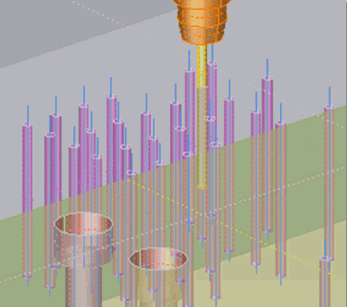
User Cycle Machining
This capability enables users to create a path for holing on the basis of the data that they have registered through the use of 'User Cycle (Macro)' feature.
- The registration function enables users to add and edit User Cycles (Cycle Codes defined by users) easily.
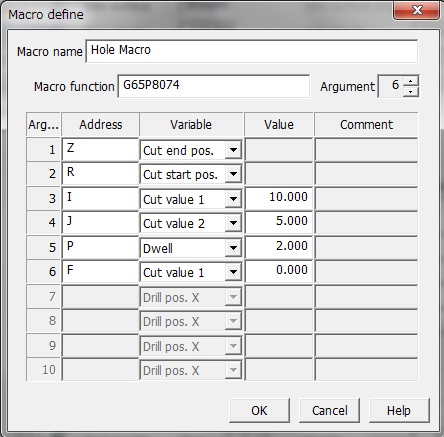
Profile Machining for Holes
The command creates a path for cutting a circle through the use of end mill.
- Upon indicating a correction of tool diameter, the command enables users to choose either of two methods for correcting the diameter: correction at the side end or correction at the center.
- The command enables users to use their discretion in creating paths. Users can indicate a pitch and a frequency for copying and pasting the initial paths for contour machining. Also, they can specify an amount of tracing the previously machined trajectory.
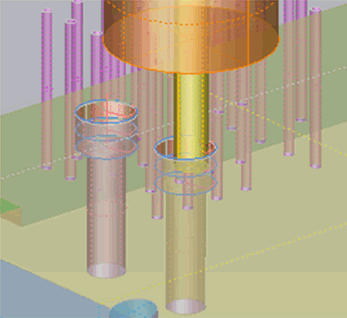
Spiral Drilling for Holes
The command creates a path for cutting a circle through the use of end mill.
- Upon indicating a correction of tool diameter, the command provides two methods for correcting the diameter: correction at the side end or correction at the center.
- The command is capable of breaking down data of an arc, expressing the data in the form of line data, and providing them to a machine tool that does not support helical machining.
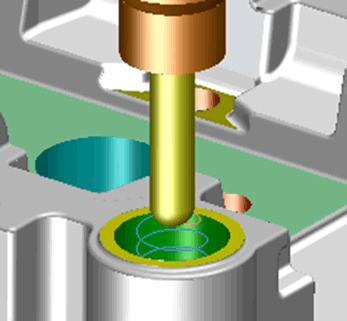
Chamfering for Holes
The command creates a path for chamfering a hole, provided that the chamfering data have been assigned to the hole.
- The command provides two methods of chamfering holes; Thrusting and Cutting a Circle.
- Users can depend on an automatic calculation that identifies the most suitable tool position for chamfering.
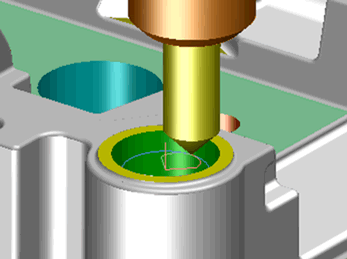
The positions for sectional split can be confirmed by checking the sectional split in real time, before executing the command of division.
- The palette window of the command consists of two sections where users can confirm calculation results while machining.
- The command enables users to set areas intuitively.
- Due to the embedded standard capabilities of machining inclined surfaces and inclined holes, users can obtain tool axis vectors on the basis of 3D model data.
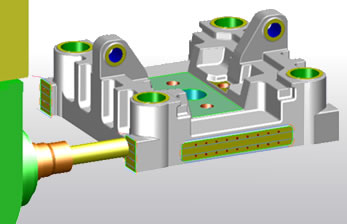
Share this












